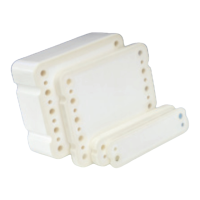40
5.3.1 Flush the Retentate Line to Waste
Figure 29
System Setup for Flushing Cleaning Solution to Waste
1. Drain, wash, and refill the feed tank with water (or attach the feed line to the water
supply).
2. Open the retentate and permeate valve.
3. Adjust the pump to deliver a flow rate of 5 to 10 L/min/m
2
(0.5 to 1 L/min/ft
2
).
Do not exceed a feed pressure of 2 barg (30 psig). If necessary, restrict the
permeate valve so at least 50% of flow is from the retentate line.
4. Pass 10 to 20 L/m
2
(1 to 2 L/ft
2
) through the retentate to waste.
5. Stop the pump.
5.3.2 Flush the Permeate Line to Waste
1. Close the retentate valve.
2. Open the permeate valve
3. Adjust the pump to deliver a flow rate of 5 L/min/m
2
(0.5 L/min/ft
2
) or until the feed
pressure equals 2 barg (30 psig).
4. Open the retentate valve until the retentate flow rate is 5 to 10% of the permeate
flow rate.
5. Run until a minimum of 20 L/m
2
(2 L/ft
2
) is flushed through the permeate, or until
the pH and/or TOC has reached an acceptable value — normally close or equal to
the pH/TOC of the incoming water.
The addition of one or more recirculation steps through both retentate and permeate
can be used to reduce the total volume of water needed to achieve the required pH,
TOC, or extractable levels. See Section 5.3.3.
5.3.3 Recirculation Procedure to Reduce pH, TOC, and Extractables (optional)
Volume Required:
8 L/m
2
(0.8 L/ft
2
) per cycle
Temperature Range: 25 to 45 °C
Retentate
Permeate
Feed
Tank
Waste
Waste
Feed
Pump
Pp
Rp
Fp

